The irresistible Lollipop Mirror designed by Marcel Wanders for Fiam
Mirrored closet doors were quite the thing in the ’70s, at least where I grew up. In at least one way, mirrored doors—at least frequently used mirrored doors—are rather impractical: so many fingerprints and smudges! Then there is the issue of what the doors reflected. In my parents’ bedroom, it was their bed. Leaving aside questions of exhibitionism I’d rather not ponder regarding the people who raised me, the mirrored doors meant they were presented with a reflection of themselves in all their ungroomed ingloriousness first thing in the morning.
Since then I vowed never to have a mirrored door or a mirrored wall, another ’70s relic, in my home.
Though I’d make an exception for this one, in a London townhouse by Henry Prideaux Interior Design. The elaborate frames complement the private-club elegance, while the mirrors themselves amplify the light and visually enlarge this narrow, dark space.
That said, mirrors can work magic in a home, beyond ensuring one has flossed properly. There’s a reason antique sconces often had mirrored backplates: to reflect and thereby double the amount of illumination. Mirrors also help create focal points where there aren’t any: Washington Irving of “Rip Van Winkle” fame positioned a mirror in his dining room opposite a window so that no matter where they sat, guests could have a view of the Hudson River and the hills beyond.
So without further ado, a few suggestions for using mirrors in your home.
• Place a large mirror at the end of a hall or in a small space to visually expand it. This helps explain the popularity of those mirrored walls, though I believe an oversize framed mirror is more chic and less blatant. I also love experimenting with mirrors opposite one another, for an endless-room effect. Sometimes it comes across as overwhelming, of course, which is why I said experimenting.
James Thomas used a nearly floor-to-ceiling mirror to make this room seem majestically long. That it also reflects several light fixtures, maximising their brightness, is a bonus.
• Place a mirror opposite or adjacent to a window. Because more natural light is always a good thing, no?
• Likewise, consider placing mirrors behind or opposite chandeliers, lamps, or other light sources. It really makes a difference come winter.
The mirror in this entry by Terri Ricci Interiors is a true multitasker. It reflects the natural light from the windows opposite as well as light from the pendant hanging in front of it—and it provides you with a last opportunity to check how you look before entering or leaving the home. Photo by Neil Landino.
• Take care when placing mirrors in a dining area. Many of us abhor the idea of watching ourselves eat. If you do want to brighten a dining room with a mirror, however, consider placing it high enough or slightly angled so that it reflects the chandelier, artwork, or a view à la Mr. Irving rather than the diners. Which brings us to…
• Make sure the reflection is worth viewing. Diners struggling with spaghetti, a tower block across the road, a perpetually overflowing hamper, oneself on the toilet, an artwork you loathe but your significant other adores… Be sure to check out what the mirror will be reflecting before you hang it.
By blocking the bottom of the mirror, Allison Willson ensures that the mirror reflects light and plants but not guests sneaking a second slice of pie.
• If your desk faces a wall, consider hanging a mirror there. This would drive me crazy, but a friend who works in sales says looking into the mirror facing his desk reminds him to sit up and smile while calling clients and prospects, which he swears pays off. Another friend who is very easily startled once placed a mirror in such a way so that she wouldn’t be startled when colleagues approached her from behind.
• Add a mirror (or two) to a gallery wall. For one thing, it creates a visual pause amidst a busy wall. For another, it introduces an element of surprise, especially if the mirror is round or oval amongst myriad rectangles.
The mirrors help open up the dense gallery wall in vintage dealer/stylist Melissa Parks’s bedroom.
• Or create a gallery wall of mirrors.
Barry Dixon used round mirrors to visually open up the narrow staircase and to complement the myriad angles and lines with curves. Photo by Erik Kvalsvik.
Mirrors can easily and affordably help compensate for myriad design shortcomings. I’m continually surprised that I don’t see more of them in homes—though maybe that’s because so many of us are still recovering from those awful mirrored walls and doors of our childhood homes. Shudder.


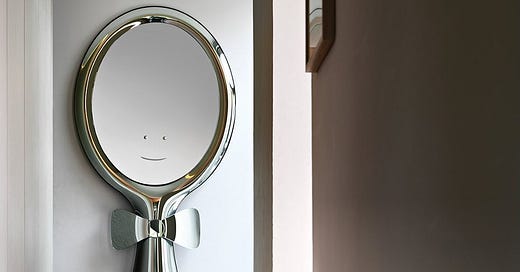



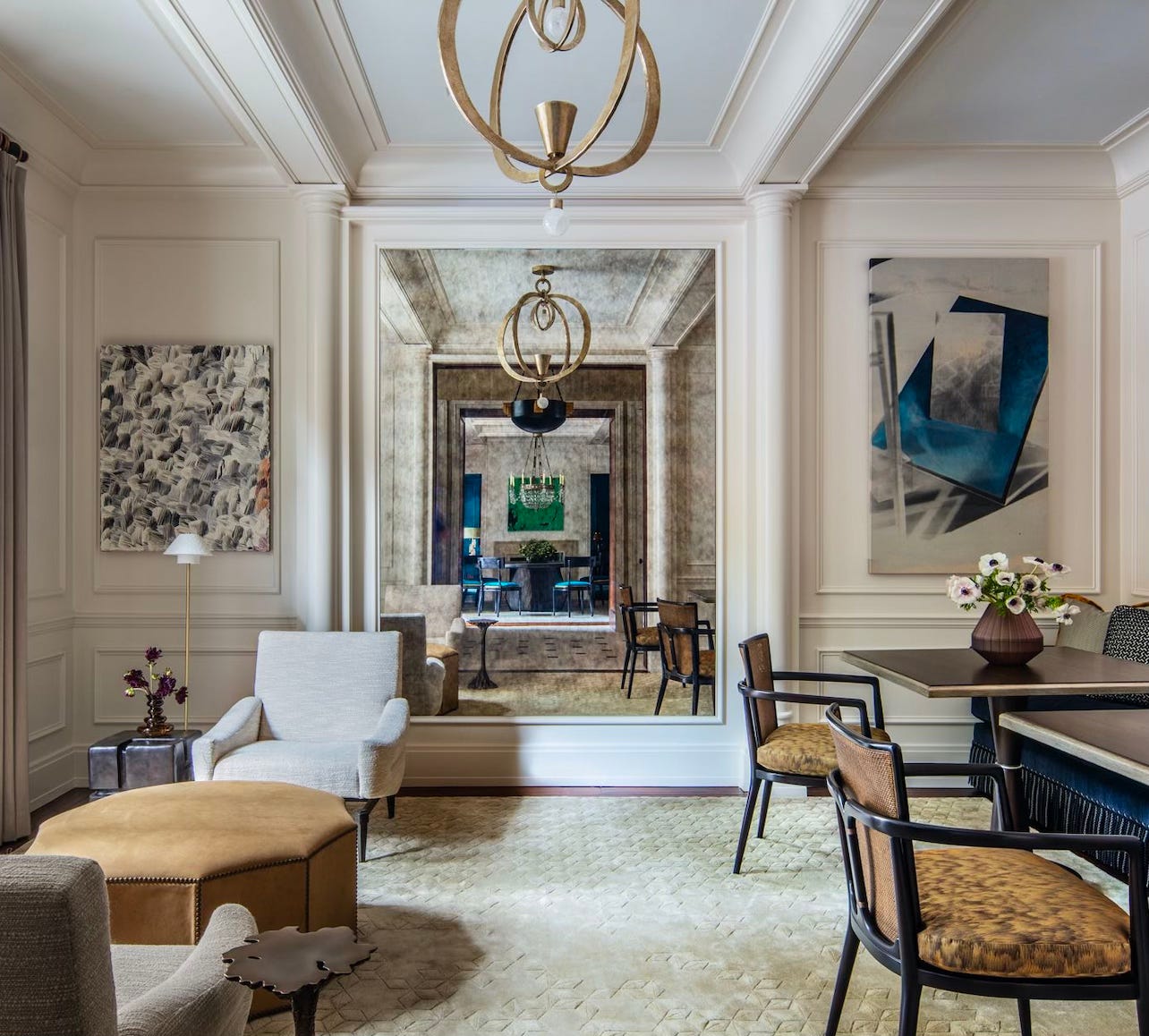
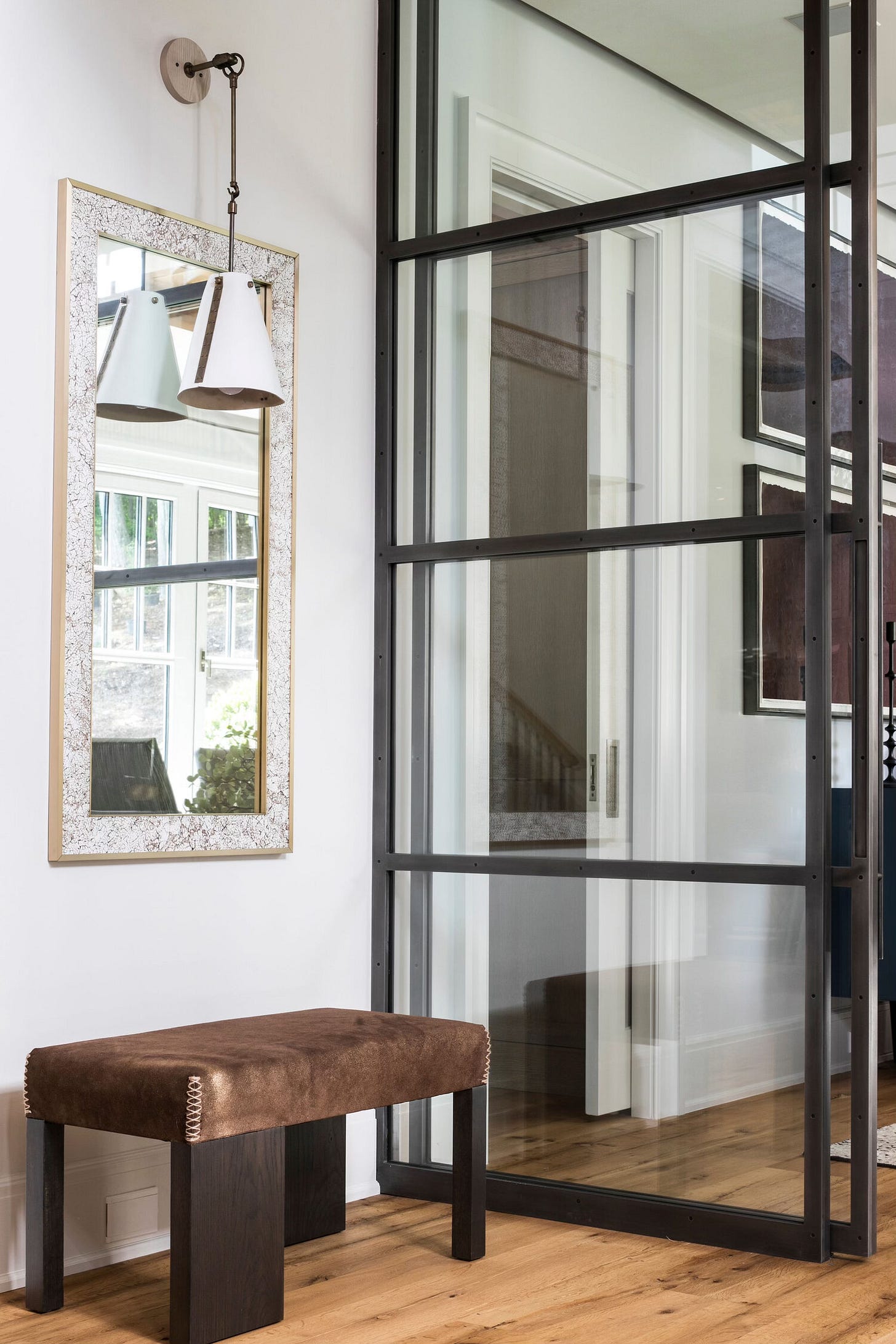
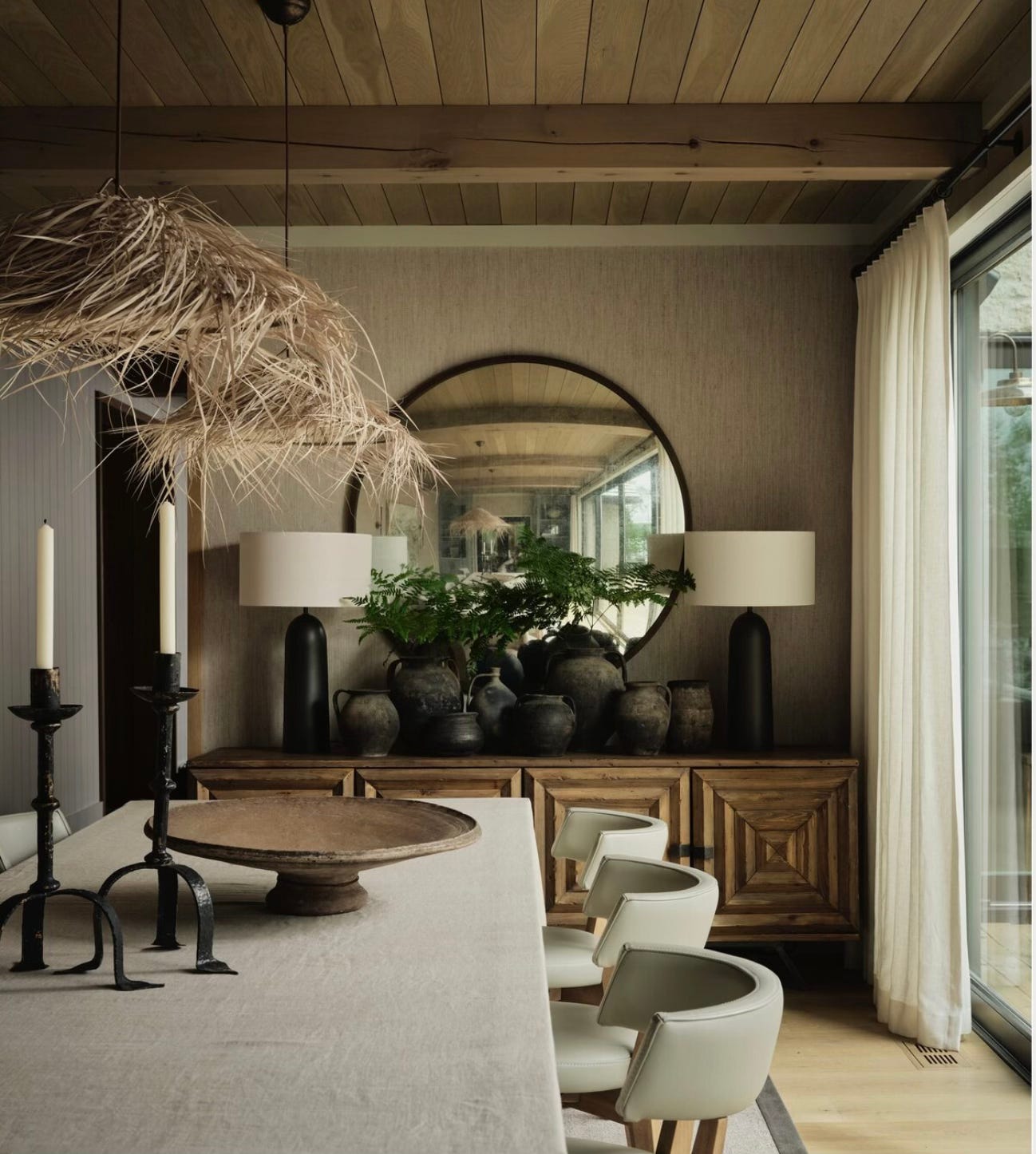
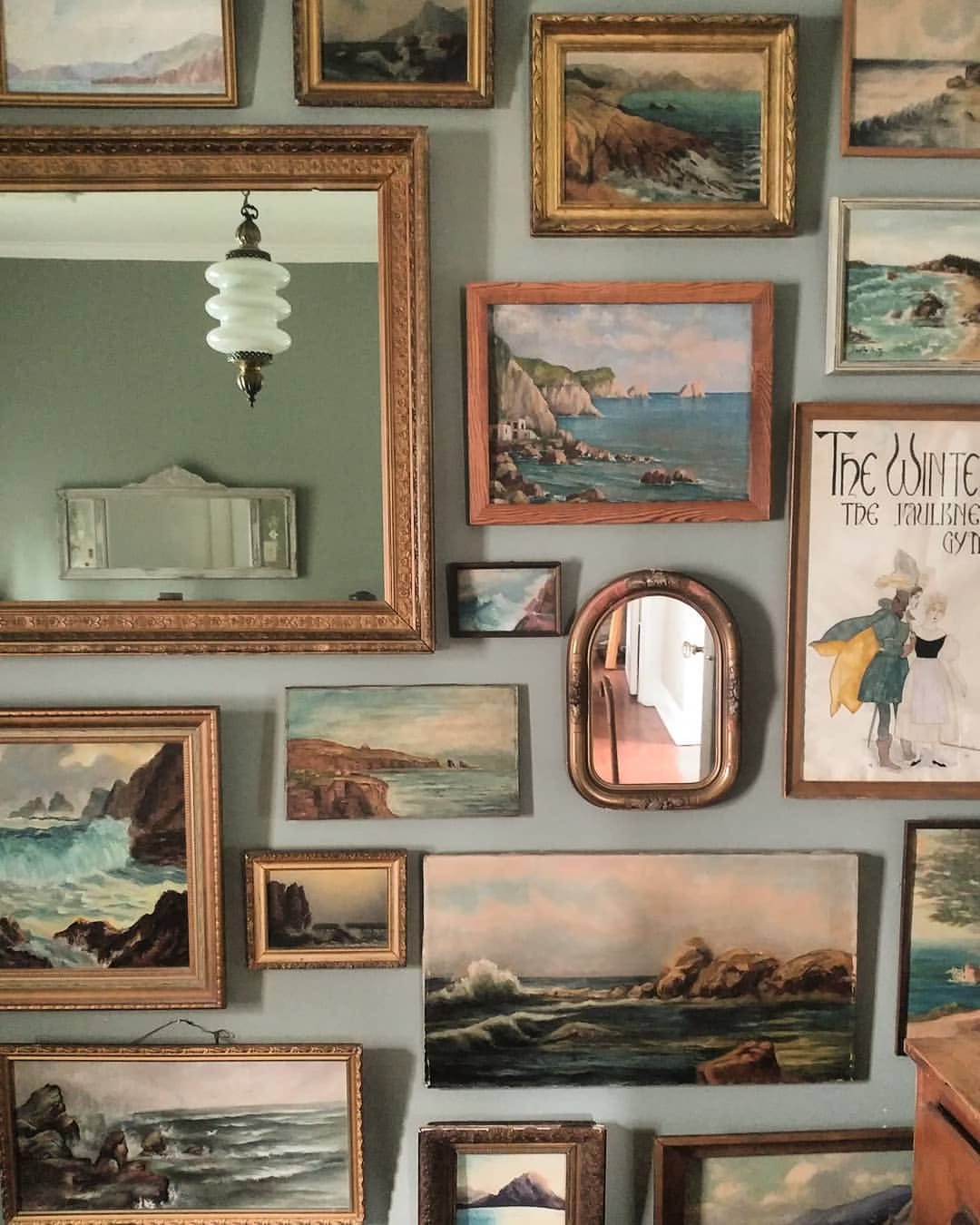
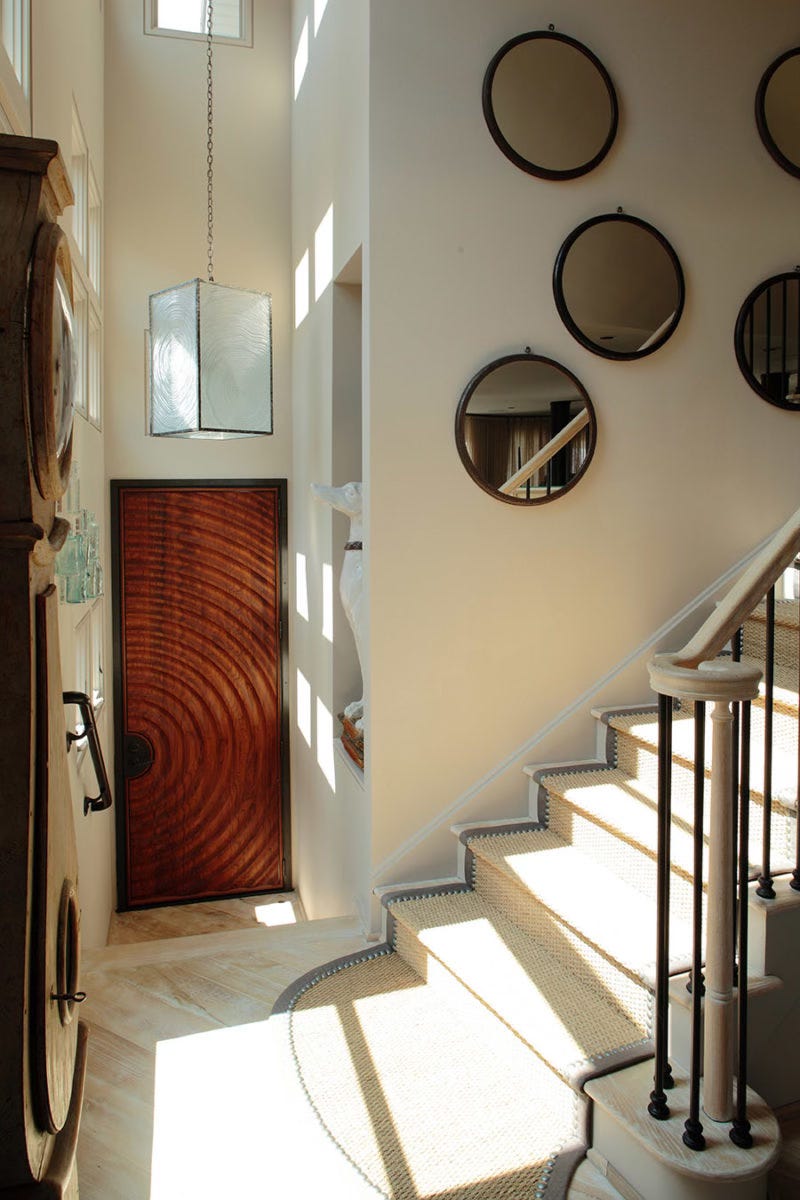
I KNEW you would!
Love the lollipop mirror. I want one!